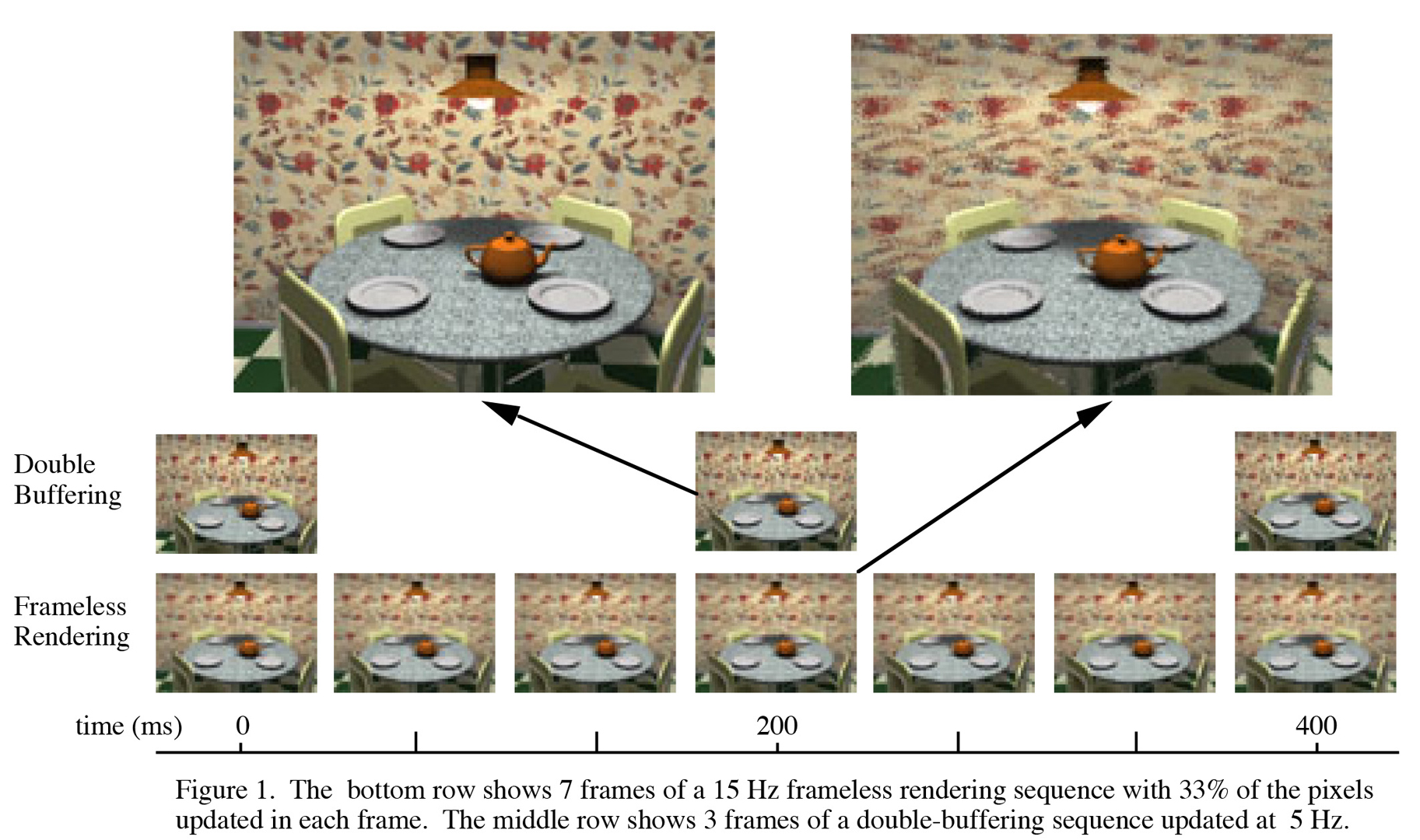“Frameless rendering: double buffering considered harmful” by Bishop, Fuchs, McMillan and Zagier
Conference:
Type(s):
Title:
- Frameless rendering: double buffering considered harmful
Presenter(s)/Author(s):
Abstract:
The use of double-buffered displays, in which the previous image is displayed until the next image is complete, can impair the interactivity of systems that require tight coupling between the human user and the computer. We are experimenting with an alternate rendering strategy that computes each pixel based on the most recent input (i.e., view and object positions) and immediately updates the pixel on the display. We avoid the image tearing normally associated with single-buffered displays by randomizing the order in which pixels are updated. The resulting image sequences give the impression of moving continuously, with a rough approximation of motion blur, rather than jerking between discrete positions.We have demonstrated the effectiveness of this frameless rendering method with a simulation that shows conventional double-buffering side-by-side with frameless rendering. Both methods are allowed the same computation budget, but the double-buffered display only updates after all pixels are computed while the frameless rendering display updates pixels as they are computed. The frameless rendering display exhibits fluid motion while the double-buffered display jumps from frame to frame. The randomized sampling inherent in frameless rendering means that we cannot take advantage of image and object coherence properties that are important to current polygon renderers, but for renderers based on tracing independent rays the added cost is small.
References:
1. Bergman, Larry, Henry Fuchs, Eric Grant, and Susan Spach. Image Rendering by Adaptive Refinement. Proceedings of SIGGRAPH ’86. In Computer Graphics 20, 4, pp. 29-37, August 1986.
2. Cook, Robert L., Thomas Porter, Loren Carpenter. Distributed Ray Tracing. Proceedings of SIGGRAPH ’84. In Computer Graphics 18, 3, pp. 137-145, July 1984.
3. Kolb, Craig E., Rayshade User’s Guide and Reference Manual, Draft 0.4, January 10, 1992.





